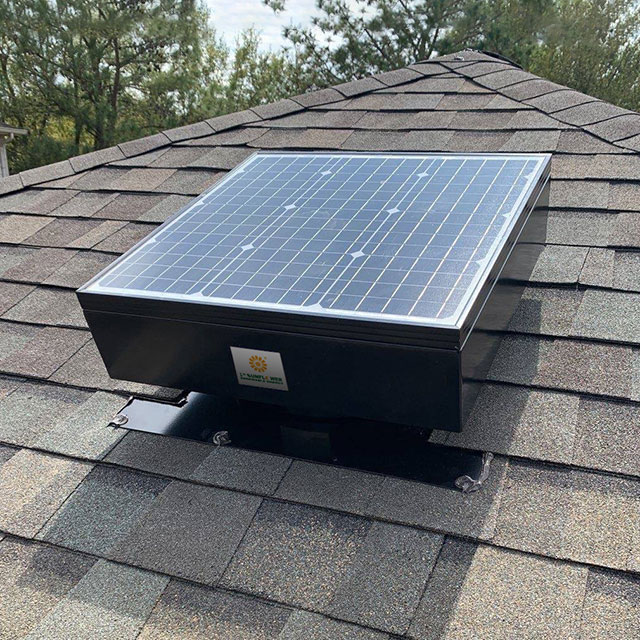Views: 16 Author: Site Editor Publish Time: 2021-06-15 Origin: Site

Attic exhaust fans can reduce your air conditioning energy costs in the summer and prevent condensation and ice dams from forming in the winter. While most are wired to your home's electrical system, there are solar powered ventilation fans that do not require electrical connections. Attic ventilation fans are designed to fit into a hole in your roof or to be installed on the inside of an eave vent.
To determine how large a powered ventilation fan you need for your attic, you first need to know the size of your attic, in square feet.
Attic Size
To determine the size of your attic, multiply the width by the length of the attic floor in feet. For single story homes, this is usually the same as the square footage of the home itself, plus any attached garage area.
Example (20 ft wide by 50 ft long attic): 20 ft x 50 ft = 1000 sq ft of attic space
Ventilation Fan Dimensions
Next, multiply the square footage of the attic space by 0.7 to get the minimum number of cubic feet of air per minute that the fan will move.
Example: 1,000 square feet of attic x 0.7 = 700 CFM minimum fan rating
Add 20% more (CFM x 1.20) if you have a steep roof and 15% more (CFM x 1.15) if you have a dark roof. Attic ventilation fans are typically rated between 800 and 1600 CFM, which makes one fan suitable for attics up to 2200 square feet in size.
Ventilation Fan Location
Install the roof-mounted fan on the back of the roof below the ridge (but not so high as to be visible from the front of the house), in the middle of the main part of the attic. Install the eave fan on the eave vent at the end of the house, away from the prevailing winds.
Vents That Draw In Air
It is also important to have enough eave or ridge vents for the fan to draw air into the attic. To know if you have enough ventilation space, divide the fan's rated cubic feet of air per minute by 300 to get the minimum square footage of intake ventilation space required for that size fan.
For example: 700CFM ÷ 300 = 2.33 square feet of air intake area
If you prefer an answer in square inches rather than square feet, multiply the answer by 144 and round to the nearest inch (2.33 x 144 = 336 square inches of vent area).
Fan Thermostat
Set the attic vent fan thermostat so that it turns on between 100 and 110 degrees Fahrenheit. A humidity sensor can also be used to turn on the fan if the humidity in the attic is too high.
Ridge Vents
If your house has a ridge vent, it is not a good idea to use a power vent fan because the fan will tend to suck in air from the ridge. This goes against the natural function of a ridge vent to move hot air out of the attic as it rises. In addition, the fan could potentially generate enough airflow to suck rainwater in through the ridge vent.